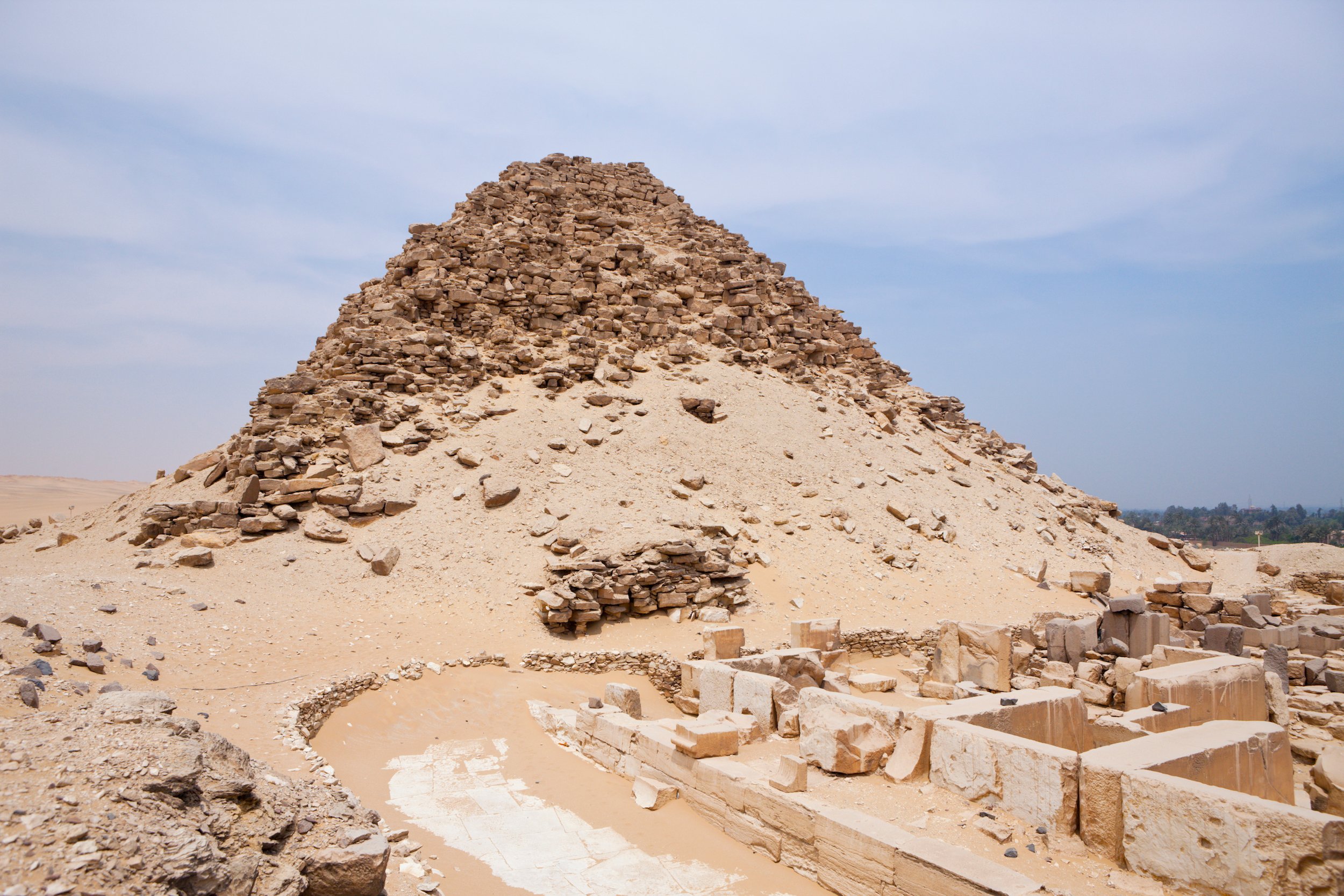
A team of Egyptian-German archaeologists have discovered eight storage chambers, known as magazines, in the course of restoring the inside of Sahura’s pyramid in the Abusir Necropolis south of Giza.
Archaeologists are claiming it will alter how the architecture of the Fifth Dynasty, 25th and 24th centuries B.C.E., is understood.
Sahura was the second pharaoh of the Fifth Dynasty and his storage chambers are both larger and more numerous than his predecessors. “This suggests that additional storage space was required in the pyramid to accommodate the large quantity of royal funerary equipment,” lead archaeologist Mohamed Ismail Khaled told Artnet News.
Also of note, Khaled says, is that Sahura is quite possibly the only Old Kingdom king to have witnessed the completion of his pyramid complex and the storing of his funerary equipment.
The pyramid, which at 154 feet tall is relatively small, was visited by archaeologists in the 1960s and then again in 2006 when a project backed by Egypt’s Supreme Council of Antiquities reached the entrance to the vestibule. It was ultimately cancelled due to the danger of falling blocks.
Magazine seven inside the pyramid. Image: courtesy Mohamed Ismail Khaled.
When this latest effort (funded by American Research Center in Egypt) began in 2019, passages remained covered in rubble and the substructure of the pyramid was at risk of collapsing.
Led by Khaled, an Egyptologist at University of Würzburg, the team focused on clearing the interior corridors, replacing severely damaged walls, and creating a 3D digital copy of the pyramid’s interior. Over the course of three archaeological seasons, typically Spring through Fall in Egypt, the team was able to reach and clear Sahura’s antechamber. It was there that archaeologists found traces of a passage that chimed with long-disputed claims of the 19th century British explorer John Perring, who entered and started to clear the pyramid in the late 1830s.
Perring recorded uncovering a low passageway, one he believed would lead to a storerooms area, but was unable to pursue it due to the danger involved in clearing the pyramid — in the course of doing so several of his team were seriously injured. Khaled’s team were able to clear the whole passageway and prove Perring had been correct, through the discovery of the magazines.
Magazine one inside the pyramid. Image: courtesy Mohamed Ismail Khaled.
“This exceptional number of magazines, as well as the uniquely long passageway, can be considered a new architectural feature of Old Kingdom pyramids,” Khaled wrote in a paper outlining the archaeological work.
In addition to securing the space by installing a ceiling of rods and beams, the team used a handheld LiDAR scanner to create a comprehensive map of the pyramid’s corridors and chambers. The magazines inside Sahura’s pyramid will soon be opened to scholars for the purpose of further research.
“This modern technology has allowed for comprehensive mapping and create a lasting record of the exploration efforts,” Khaled wrote. “The discovery and restoration of the magazines are expected to revolutionize our understanding of the pyramid’s history and architecture, challenging existing paradigms in the field.”
See more images below:
The team involved in the restoration project inside the long passageway. Image: courtesy Mohamed Ismail Khaled.
The 3D scan created by the Egyptian-German team using LiDAR technology. Image: courtesy Mohamed Ismail Khaled.
Magazine four inside the pyramid. Image: courtesy Mohamed Ismail Khaled.
More Trending Stories: